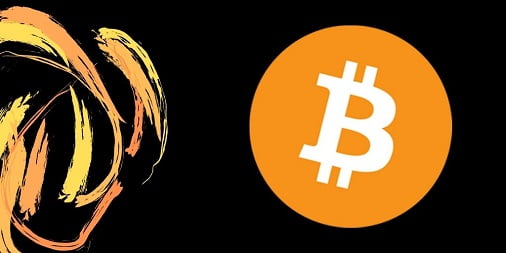A primer on investment vehicles.

With Bitcoin entering the publicly, I think the community would benefit from a basic explanation of the different types of investment vehicles which they could potentially utilize to invest in Bitcoin.
The vehicles I’ll touch on are as follows:
- Open-end funds
- Closed-end funds
- Exchange traded funds
- Exchange traded notes
Open end funds
Open-end funds, better known as “Mutual Funds”, are a staple of the investment world.
An open-end funds’ shares don’t trade among individual traders or investors, but instead are bought and sold in transactions directly with the fund itself. While orders can be placed at any point during the trading day, they only execute after the close of the trading day, after the funds manager or advisor has had time to accurately value the fund. In addition, shares only trade at the actual value of the funds assets (the Net Asset a Value or NAV).
An open-end fund is such because there is not a fixed number of shares in existence. Instead, the distributor creates or redeems shares in order to accommodate the buy and sell orders of its customers.
The privately traded Bitcoin Investment Trust (BIT) is an example of an open end fund. However, while the fund can create new shares in response to purchases, the SEC has prevented them from redeeming shares.
Closed-End Funds
Closed-end funds are similar to open end funds in that each share typically represents a fractional holding of an underlying pool of assets. In contrast to open-end funds, closed-end funds have a fixed number of shares, and those shares traded among individual investors.
This means that shares of closed-end funds dont trade strictly at their NAV, but instead can trade at prices greater or less than their NAV (known as trading at a premium or at a discount),in accordance with market forces (supply and demand).
The publicly traded Bitcoin Investment Trust (GBTC) is an example of a Closed End Fund.
Exchange Traded Funds (ETF’s)
ETF’s are a hybrid between open-end funds and closed-end funds. Like closed-end funds, they are quoted by exchanges and traded directly between investors throughout the trading day. But, like open-end funds, ETF’s do not have a fixed number of shares. Shares are created in “baskets” by Authorized Participants, which are entities that have pre-existing arrangements with ETF managers that allow them to create or redeem shares on demand.
Authorized Participants typically exercise their ability to create or redeem shares to arbitrage between ETF shares and the underlying assets. By taking advantage of mispricings between the two, Authorized Participants essentially guarantee that shares of an ETF will trade inline with the value of their underlying assets.
As an example, imagine XYZ ETF trades at $11 per share, while possessing only $10 per share of underlying assets. An Authorized Participant can buy up underlying assets, deliver them to the ETF, receive shares and sell those into the market, earning them “risk free” (or very low risk) money until the prices converge.
On the other side, if an ETF trades at a discount to NAV, the Authorized Participant will buy shares, redeem them from the ETF for the underlying assets, and sell those until the prices of the ETF and the underlying assets converge.
The Winklevoss Bitcoin Trust (COIN) is planned to be an ETF, though it is still awaiting SEC approval.
Exchange Traded Notes (ETN’s)
ETN’s are newcomers to the investment world, but a Bitcoin related ETN has been created, so it will be covered as well.
ETN’s are derivatives of the issuer, possessing no underlying assets of their own. Rather than being distinct legal entities that own asseWhen you buy and ETN, you’re buying an IOU from the distributor, where they promise to redeem those notes for the value of the asset they’re tracking.
Typically, the distributor will own the underlying assets in order to protect themselves if the prices rises, but holders of ETN’s have no claim to those assets. So long as markets function normally, and the issuer remains solvent, ETN’s should operate as promised, but they are subject to credit risk – if the issuer goes bankrupt, ETN holders would likely take a place among unsecured creditors.
Bitcoin Tracker One, which just began being quoted on Nasdaq Stockholm, is an ETN.
recap:
BIT = open end fund. Privately traded, but prohibited from redeeming shares.
GBTC = Publicly traded closed end fund.
COIN = planned to be a publicly traded Exchage Traded Fund.
Bitcoin Tracker One = publicly traded Exchange Traded Note.
Relevant news

Top 3 cele mai bune cazinouri din România
Top 3 cele mai bune cazinouri din România Bucurați-vă de numeroase jocuri, bonusuri și opțiuni…

Excellent bitcoin casino gambling pakistan
Excellent Bitcoin Casino Gambling in Pakistan Are you looking for a thrilling and secure way…

Bitcoin casinos Pakistan and crypto casinos Pakistan
Can I safely play Bitcoin casinos Pakistan and crypto casinos Pakistan? As you might imagine,…
Tales of Asgard: Loki’s Fortune slot Play n Go
ABOUT GAME What's the story? A life in Thor’s shadow leaves Loki filled with jealousy. When it comes to the question of who will take their father’s throne, it is Thor or Loki. And we…
Prism of Gems slot
ABOUT GAME PRISM OF GEMS is a 5-reel video slot machine with up to 3087…
Charlie Chance slot
Charlie Chance Unfinished Games If your game round is disrupted, all game information and placed…
